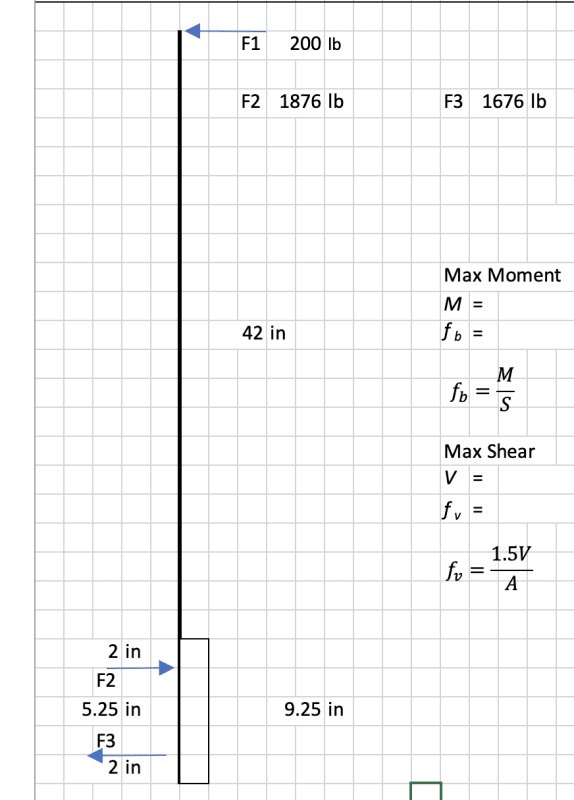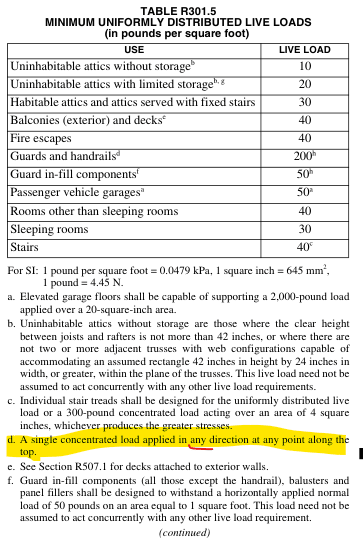Personally, I think 200 lbf is ridiculous for non-industrial applications.
I posted to the ASCE forum a while back and got crickets except from Ron Hamburger, whom I have a lot of respect. He spent the time to dig up the testing that was done in the 70s, on behalf of OSHA to come up with this criteria. A 200 lbf is me hitting the top rail at over 1.0g with a LDF of 1.0, which is ABSOLUTELY ridiculous. Not too long ago, we could use 1.33, but that was taken out when the code further defined the force as a live load, not a transient load.
I am always embarrassed when I present guardrail details to my clients. There is apparently no pushback from the engineering community due to some of the recent rail failures, which I'm sure, that are the result of either dry rot or not designed at all. Also consider the fact that the deck joists will not always be at 4'-0" centers, so you will have to come up with a Rube Goldberg detail for the case where the post does not align with the deck joist. Another condition to look at is at the corners. Hopefully, you could trib some of the load to the top rail connecting to the exterior building wall, but, if not, good luck! Even so, you have to detail/analyze the 200 lbf parallel to the long direction of the deck. Yes, there are many posts to take the load, but detailing that connection at the corner, providing proper edge distances for the bolts, etc. is always challenging.
Here in California, we have CA SB 721 and SB 326 coming up where we are going to have to look at a lot more rails between now and the end of next year. As soon as a contractor finds dry rot and needs to present an engineered detail to the local jurisdiction, we are going to become Enemy Number 1 if we follow the code explicitly.





